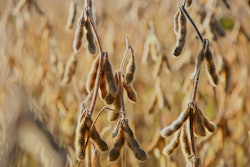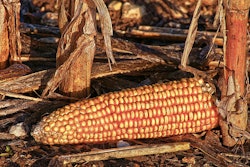
USDA Quarterly Stocks Report Shows Stock Declines
- As expected, corn, soybeans, and wheat saw sizable cuts to stocks versus a year ago.
- Corn came in at 1,237 million bushels, at the upper range of market estimates, but still well below last year’s 1,919 million.
- 2020 production was revised down to 14,111 million bushels, 71 million less than the previous report.
- Soybeans provided a shock, coming in at 256 million bushels, which was well-above the high estimate of 202 million; last year’s stocks were at 525 million.
- The higher-than-expected soybeans stocks came from an extra 81 million bushels in production.
- Wheat came in at 1,780 million bushels, at the low-end of expectations; last year’s stocks were at 2,158 million.
FBN’s Take On What It Means For The Farmer: The Quarterly Stocks report provided some, perhaps expected, surprises. Namely the USDA reported an extra 81 million bushels of 2020 soybean production, coming from a 0.8 bushel yield bump to 51.0 bushels per acre. It was a fairly strong bearish surprise and futures responded as such. Corn, on the other hand, saw a production drop of 71 million bushels with yields falling about one-half bushel to 171.4. However, 2020/21 feed/residual use fell to 5,604 million bushels from 5,725 million, helping keep ending stocks at 1,237 million, near the upper end of range estimates. Wheat came in at the lower end of expectations with 1,780 million bushels, versus last year’s stocks at 2,158 million.
USDA Small Grains Report Shows Decrease in Wheat Production
- The 2021 expected wheat production came in at 1,646 million bushels, at the lower end of estimates.
- This was a bigger cut than expected to the previous 2021 USDA estimate of 1,697 million bushels.
- The biggest cuts were seen in a hard red winter (777 to 750 million), white winter (176 to 137 million), and other spring (343 to 331 million).
- Barley production saw a 12 million bushel increase from the USDA’s previous estimate, 118 million versus 106 million; this mainly came from a yield increase to 60.4 bushels per acre from 51.6.
- The oat production estimate decreased slightly from 41 million bushels to 40 million; estimated yields increased to 61.3 bushels per acre from 57.4, but acreage was revised slightly downwards.
FBN’s Take On What It Means For The Farmer: While the overall numbers largely fell within expectations, the cuts to hard red winter and white winter were deeper than the trade estimated. With wheat stocks also at the low end of estimates, futures climbed on the bullish reports. Barley and oats continue to show weak production values versus previous years, mainly from poor conditions in the PNW, but barley showed a slight upward revision in production on stronger yields.
FBN Market Advisory services are offered by FBN BR LLC, dba FBN Brokerage, FBN BR and FBN Market Advisory (NFA ID: 0508695)
The risk of trading futures and options can be substantial and may not be suitable for all investors. Past performance is not necessarily indicative of future results.
This is not an offer or solicitation in any jurisdiction where we are not authorized to do business or where such offer or solicitation would be contrary to the local laws and regulations of that jurisdiction, including, but not limited to, persons residing in Australia and Canada.










